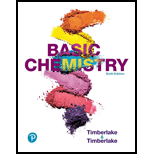
(a)
Interpretation:
Interpret the cooling curve from the temperature 1100 C and -100 C and show the solid state in it.
Concept Introduction:
A graphical plot that represents changes in temperature with respect to time for a material over a range of temperature through which it cools is said to be a cooling curve for the material.
(b)
Interpretation:
Interpret the cooling curve from the temperature 110o C and -10o C and show the freezing state in it.
Concept Introduction:
A graphical plot that represents changes in temperature with respect to time for a material over a range of temperature through which it cools is said to be a cooling curve for the material.
(c)
Interpretation:
Interpret the cooling curve from the temperature 110o C and -10o C and show the liquid state in it.
Concept Introduction:
A graphical plot that represents changes in temperature with respect to time for a material over a range of temperature through which it cools is said to be a cooling curve for the material.
(d)
Interpretation:
Interpret the cooling curve from the temperature 110o C and -10o C and show the condensing state in it.
Concept Introduction:
A graphical plot that represents changes in temperature with respect to time for a material over a range of temperature through which it cools is said to be a cooling curve for the material.
(e)
Interpretation:
Interpret the cooling curve from the temperature 110o C and − 10o C and show the gas state in it.
Concept Introduction:
A graphical plot that represents changes in temperature with respect to time for a material over a range of temperature through which it cools is said to be a cooling curve for the material.
Want to see the full answer?
Check out a sample textbook solution
Chapter 10 Solutions
Pearson eText Basic Chemistry -- Instant Access (Pearson+)
 ChemistryChemistryISBN:9781305957404Author:Steven S. Zumdahl, Susan A. Zumdahl, Donald J. DeCostePublisher:Cengage Learning
ChemistryChemistryISBN:9781305957404Author:Steven S. Zumdahl, Susan A. Zumdahl, Donald J. DeCostePublisher:Cengage Learning ChemistryChemistryISBN:9781259911156Author:Raymond Chang Dr., Jason Overby ProfessorPublisher:McGraw-Hill Education
ChemistryChemistryISBN:9781259911156Author:Raymond Chang Dr., Jason Overby ProfessorPublisher:McGraw-Hill Education Principles of Instrumental AnalysisChemistryISBN:9781305577213Author:Douglas A. Skoog, F. James Holler, Stanley R. CrouchPublisher:Cengage Learning
Principles of Instrumental AnalysisChemistryISBN:9781305577213Author:Douglas A. Skoog, F. James Holler, Stanley R. CrouchPublisher:Cengage Learning Organic ChemistryChemistryISBN:9780078021558Author:Janice Gorzynski Smith Dr.Publisher:McGraw-Hill Education
Organic ChemistryChemistryISBN:9780078021558Author:Janice Gorzynski Smith Dr.Publisher:McGraw-Hill Education Chemistry: Principles and ReactionsChemistryISBN:9781305079373Author:William L. Masterton, Cecile N. HurleyPublisher:Cengage Learning
Chemistry: Principles and ReactionsChemistryISBN:9781305079373Author:William L. Masterton, Cecile N. HurleyPublisher:Cengage Learning Elementary Principles of Chemical Processes, Bind...ChemistryISBN:9781118431221Author:Richard M. Felder, Ronald W. Rousseau, Lisa G. BullardPublisher:WILEY
Elementary Principles of Chemical Processes, Bind...ChemistryISBN:9781118431221Author:Richard M. Felder, Ronald W. Rousseau, Lisa G. BullardPublisher:WILEY





